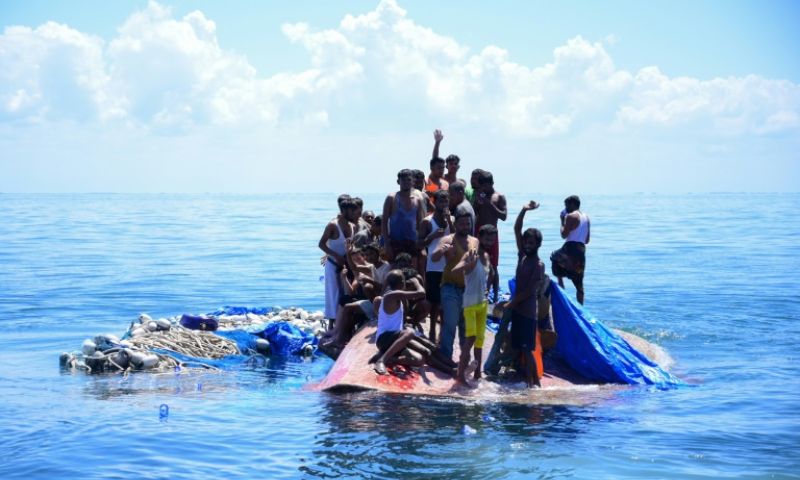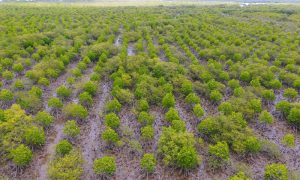MEULABOH: Dozens of Rohingya refugees, stranded on a capsized ship’s rusty hull, were rescued on Thursday after being adrift at sea for over a day, suffering from dehydration and sunburn.
The group comprised 69 individuals, including men, women, and children, some of whom had spent weeks on a fragile wooden boat originating from dire camps in Bangladesh, where many Rohingya refugees have sought refuge from persecution in Myanmar.
Their only refuge was the reddish hull of the vessel, which protruded from the water after their boat and another vessel attempting to assist them capsized on Wednesday. The second boat, owned by local fishermen, overturned when the refugees panicked while trying to board it.
Survivors, like a 27-year-old named Dostgior, explained the capsizing by citing heavy rain. Local fishermen and the United Nations Refugee Agency (UNHCR) estimated that around 150 Rohingya were on board, with dozens swept away in the incident.
A statement from the local search and rescue agency reported that 69 survivors, including nine children, 42 men, and 18 women, were rescued alive.
Upon reaching Meulaboh port in West Aceh, the refugees were met by ambulances and medical personnel. However, some locals in Beureugang village protested against hosting the refugees, displaying a banner rejecting Rohingya refugees.
The Rohingya refugees, seeking to reach Thailand but rejected, have faced challenges during their journey, including being pushed back from Aceh shores in previous months due to shifting sentiments among locals.
According to fishing community secretary-general Pawang Amiruddin, six Rohingya from the same vessel were rescued earlier, and one survivor reported that approximately 50 people were missing or feared dead due to the capsizing.
From mid-November to late January, UNHCR reported 1,752 refugees, predominantly women and children, arriving in Aceh and North Sumatra provinces, marking the largest influx into Indonesia since 2015.























